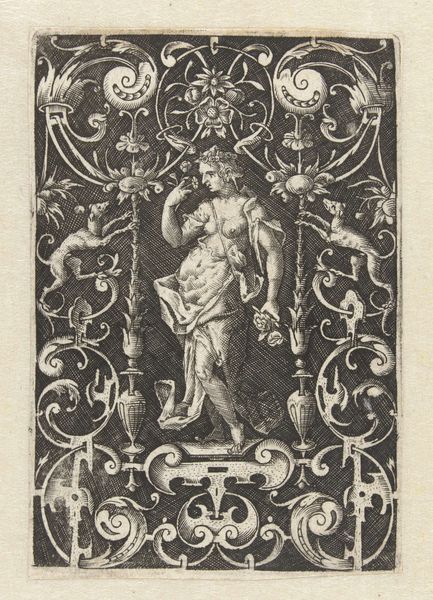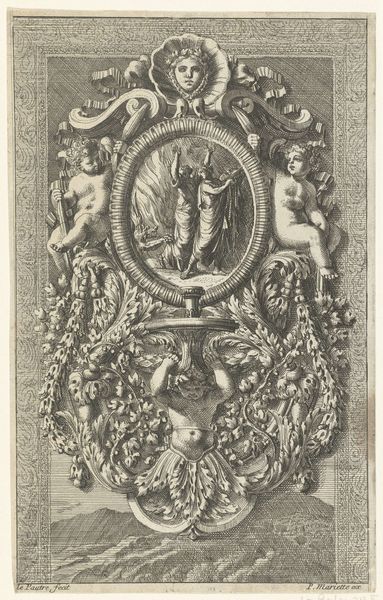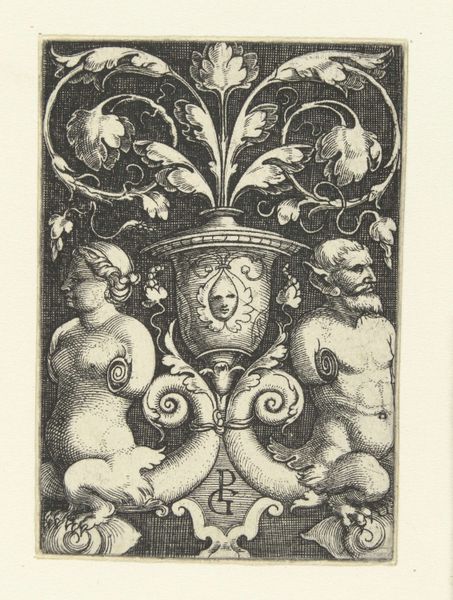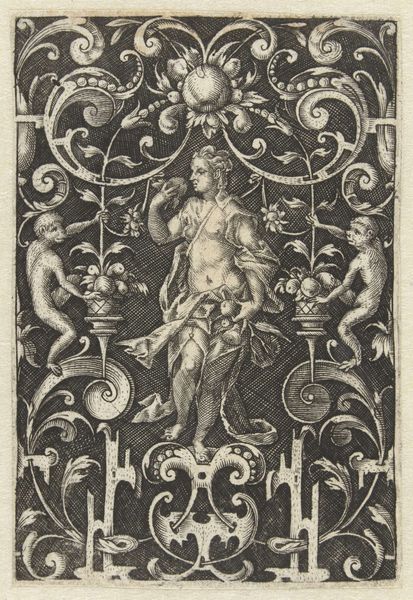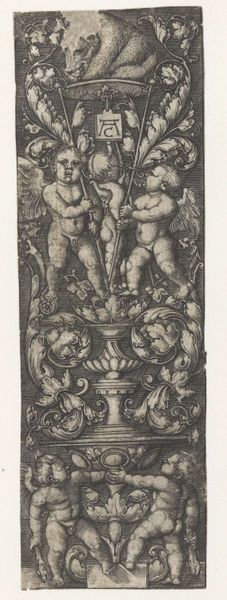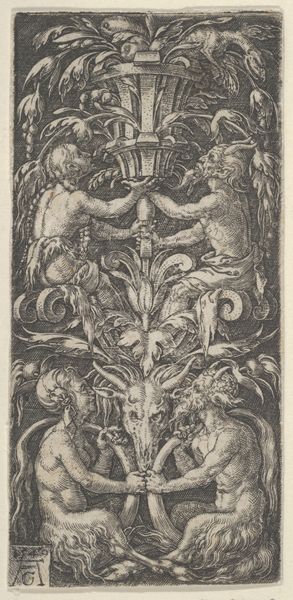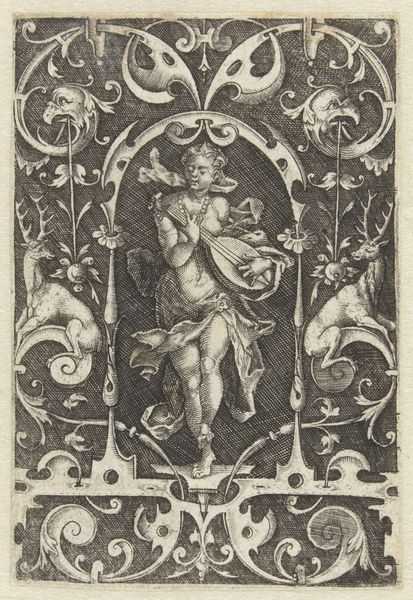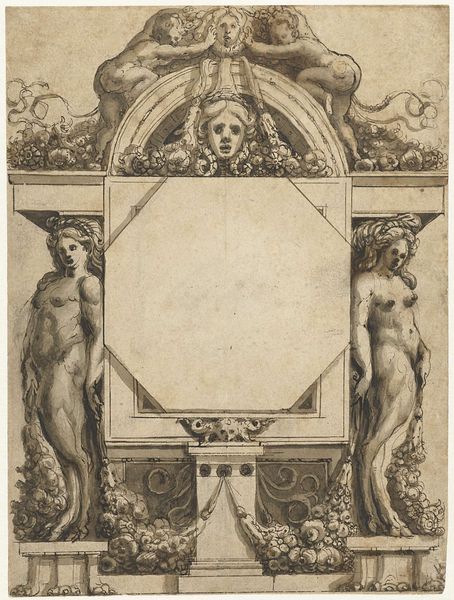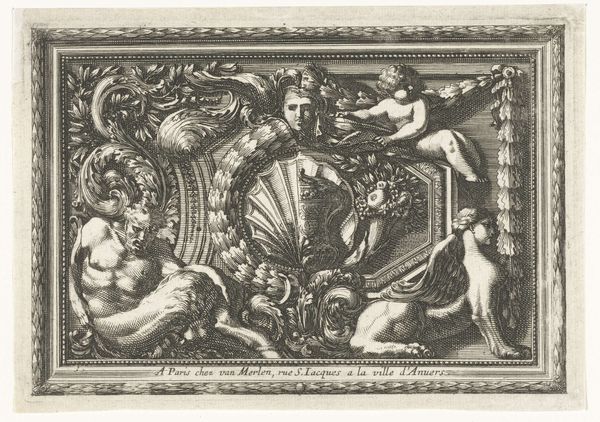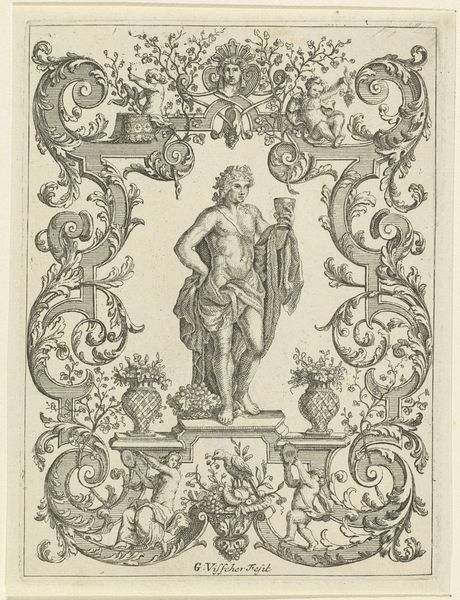
ornament, print, metal, engraving
#
ornament
#
allegory
# print
#
metal
#
figuration
#
northern-renaissance
#
decorative-art
#
engraving
Copyright: National Gallery of Art: CC0 1.0
Here is Heinrich Aldegrever’s “Ornament with Vase and Two Female Figures,” made around 1553, a period marked by significant social and religious upheaval in Europe. Aldegrever, a German printmaker, lived during the Protestant Reformation, an era influencing not only the content but also the function of art. This print, with its symmetrical composition of mythological figures and elaborate foliage, would have been used as a template for artisans. The figures have human upper bodies and the lower bodies of goats. In classical mythology, the figure is male and called a faun. Here however, Aldegrever has created two of them, and made them women. Their bodies are used to adorn the vase, their shame is covered only by their own hands. Prints like these democratized art, making aesthetic designs accessible beyond the elite. However, this accessibility was also a means to promote certain ideologies. Aldegrever was sympathetic to the reformation, and his work often reflected the era's shifting values. Here, the female body becomes a mere ornament, their purpose is beauty, not power. Aldegrever offers us an opportunity to reflect on the complex interplay between beauty, power, and the female form.
Comments
No comments
Be the first to comment and join the conversation on the ultimate creative platform.
